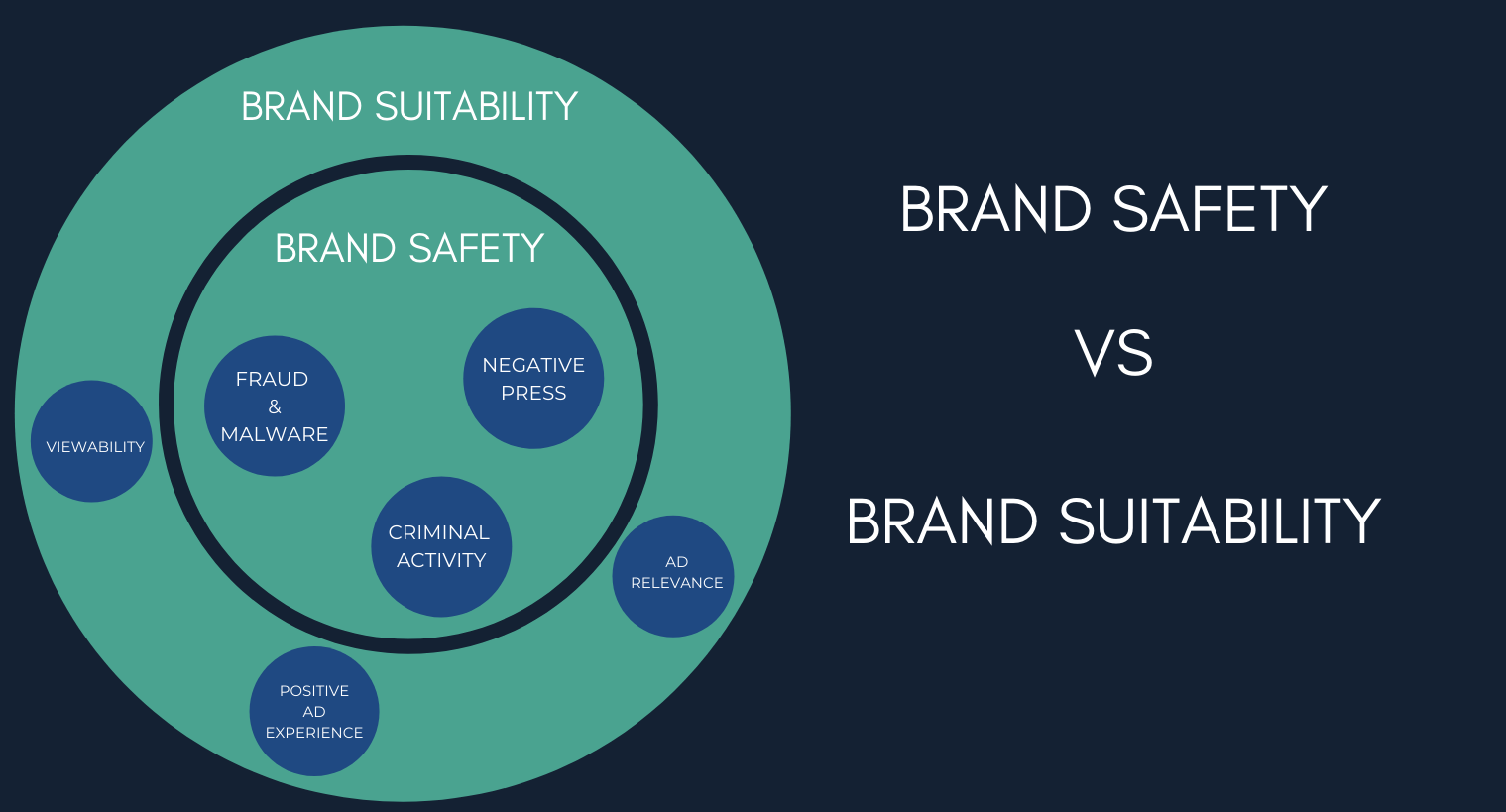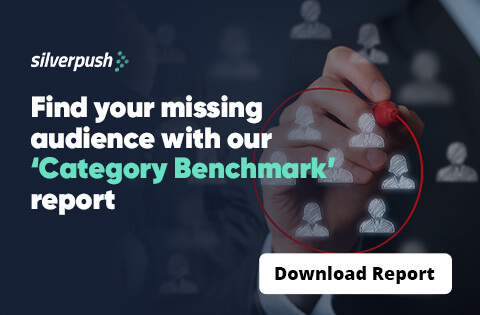Brand Safety and Brand Suitability – Do they Differ? | 11 Apr, 2022

It’s not just viewability and ROI that brands demand while buying ad inventory, they want brand safety and suitability too. The unprecedented days experienced during the Covid-19 times have forced advertisers to think about brand suitability, brand safety & precise targeting as well.
As much as advertisers want to see their campaigns running on the most relevant content, they don’t want it at the cost of them appearing next to unsafe content.
This is when the importance of brand safety and suitability comes into play.
Does Brand Safety and Suitability Differ from Each Other?
The answer to the question is No. Brand safety and suitability are not different from each other, brand suitability is just the evolution of brand safety.
What is Brand Safety?
Brand safety is the practice of preserving a brand’s reputation and preventing it from appearing in potentially harmful circumstances like hate speech, terrorism, illegal drugs, piracy, obscenity, death/injury, etc.
For example, any brand might not want their ads to get displayed next to breaking news about the war.
With brand safety, the primary goal is to associate the brand with good, authoritative, and non-confrontational content. To be successful in this endeavor, primitive measures like keyword banning and URL block listing were used to avoid unwanted or improper brand connections.
What is Brand Suitability?
Brand suitability takes brand safety to the next level. It is more than ensuring that the brand’s reputation isn’t disrupted by the content around it.
More importantly, it is based on understanding the underlying meaning of content as well as the precise context of what is on the page.
For instance, if you are a publisher in the banking industry. Your inventory is ideal for banks to display their advertisements. However, if reports about financial wrongdoings begin to make the press, the same banks will avoid placing advertisements in such articles.
However, avoiding the full website for advertising might harm the advertiser’s effort. This is where keyword blacklisting comes in handy for filtering out articles that contain ‘risky’ news.
Why Brand Safety and Suitability are Important?
Both brand safety and brand suitability are ever-evolving and play a huge role in preserving a brand’s reputation within the digital advertising realm.
Whether it is digital marketers, agencies, or publishers, all have prioritized brand safety procedures. This is crucial to not lose your customers as a result of poor brand alignment.
According to a report, 43% of customers have stopped working with a brand in which they lost trust. Following are the reasons why you must protect brand safety and suitability at all costs.
1. Protecting Brand Reputation: When ads are placed next to inappropriate or controversial content, it can damage a brand’s reputation. For example, if a luxury brand’s ad is placed next to a story about a celebrity scandal, it can make the brand look like it is associated with that scandal.
2. Avoiding Legal Risks: In some cases, brands can be held liable for the content that their ads are placed next to. For example, if a brand’s ad is placed next to hate speech, the brand could be sued for promoting hate speech.
3. Ensuring Compliance with Industry Regulations: Many industries have regulations that govern where ads can be placed. For example, the financial industry has regulations that prohibit ads from being placed next to content that is considered to be gambling or investment advice.
4. Improving Campaign Performance: When ads are placed in the right context, they are more likely to be seen and remembered by consumers. This can lead to improved campaign performance, such as increased brand awareness and sales.
In addition to these reasons, brand safety and suitability are also important for protecting consumers. When ads are placed in the right context, consumers are less likely to be exposed to inappropriate or harmful content. This can help to create a safer and more enjoyable online experience for everyone.
Brand suitability bridges the risk-opportunity gap by providing context-based controls that allow digital marketers to target safe, acceptable, and brand-building content.
Challenges of Brand Safety and Brand Suitability
Brand safety is concerned with preventing the loss of trust between a brand and a customer. This is due to the fact that without trust, revenue, brand equity, and customers’ interests are either reduced or eliminated.
A transparent digital advertising brand safety vendor partnership is the solution to this problem.
Advertisers must understand that the brand safety approach used for their digital advertising initiatives works at the speed of culture. This can help in absorbing new issues as they arise and does not over-block information or allow unsafe/inappropriate content to pass through.
This happens mostly during keyword blocking and domain-level allow and block listing. Because of over-blocking, many keywords that have different meanings, and URL domains that house information on a broad variety of topics get sidelined.
When it comes to brand suitability, many businesses fail to execute it successfully due to the inability to find a comprehensive solution.
According to a recent survey, 49 percent of marketers have encountered brand suitability failure, 54 percent have faced consumer hostility, and 44 percent have lost revenue because of it.
Mirrors By Silverpush – A Blend of Brand Safety And Suitability
Mirrors by Silverpush focuses not only on brand safety but also on context-relevant brand suitability. Its AI-powered in-video context key contexts identification delivers brand safety controls without killing your reach and tackles the problems of over-blocking.
The deeply trained proprietary AI models identifies custom-defined unsafe contexts like faces, actions, objects, and scenes in a streaming video. These videos are classified into many levels of video content, including smoking, adult, violence, wrecks, arms, terrorism, and others.
Along with this, it also focuses on brand suitability through text & sentiment analysis, engagement metrics, and organic influence at the video level.

BLOGS
Decoding the Digital Holiday Shopper: A Guide for Brands
It is almost that time of year again—the time when the streets are decked with lights and joy is all around. The holiday season is around the corner, and with it comes the bittersweet joy and stress of gift buying. Indeed, research suggests that holiday shoppers these days start planning, ...

BLOGS
The YouTube Effect: How Brands Are Seeing Mind-Blowing Results!
Welcome to a new era of entertainment, where YouTube isn't just a platform—it's a cultural phenomenon. A few years ago, who would have thought that creators from all corners of the globe would rival traditional TV networks in popularity? Today, YouTube is the third most visited website worldwide, with users ...

BLOGS
Holiday Advertising Strategies: How to Use Video Ads to Skyrocket Sales
Let's be honest: the holiday season is a retailer's Super Bowl. Shoppers are primed to spend, and with online sales projected to reach a colossal $957.3 billion in 2024 alone, the opportunity is bigger than ever. But in a sea of digital Santas and flashing "limited-time offers," how do you ...







